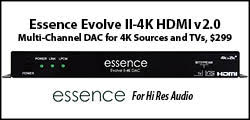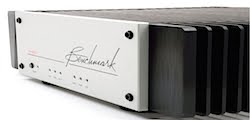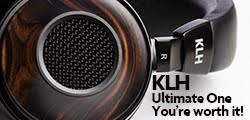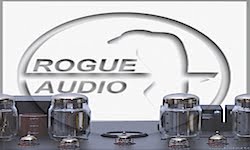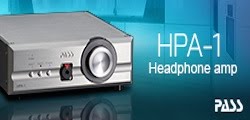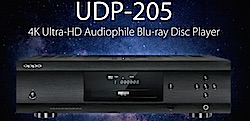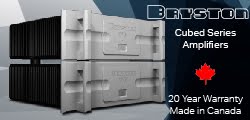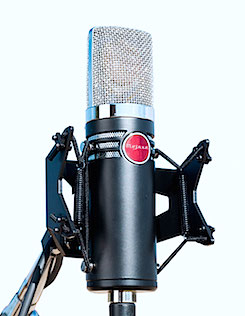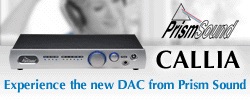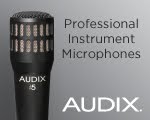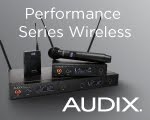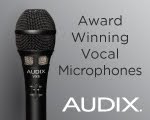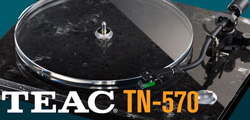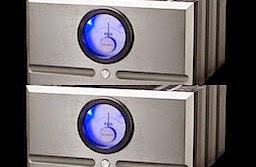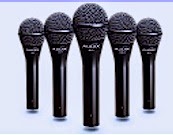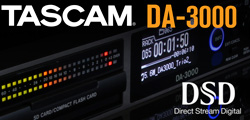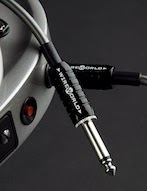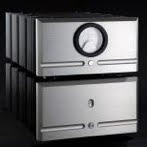Brevis...
Price: $9,000 MSRP
Likes: perfect mix of clean sound, features
Dislikes: should have an onboard phono pre
by John Gatski
In 20 years of testing Pass Labs amps and preamplifiers, I always get a little excited when a new one hits the market. The super Class A XS-150 amp and the HPA-1 headphone amp were recent examples of products that I effusively waxed positive. And now the INT-60 integrated amp joins the list.
The INT-60 is an integrated that not only lets you listen to any kind of music with that point 8, MOSFET output ease, but it is very accurate in its transmission of Hi-Res audio, such as 24/192 PCM and DSD. Much like the INT-30 from half a dozen years ago, the INT-60 quickly became a favorite in my listening room, despite its heft.
Features
Priced at $9,000, the INT-60 is a 60-watt Class A-A/B stereo amp (30 watts in Class A), utilizing the Pass Supersymmetry .8 design implemented a few years ago. The .8 amps run higher into Class A and offers a subjective listening character that is both linear, yet super smooth, with a wide, two-channel presentation when using the best speakers.
The basic .8 structure of the INT 60 is the same one used in the X30.8 stereo amp, but with a high voltage to get the extra power.
The INT-60, indeed, is one of the best sounding integrated preamp/amplifiers I have ever reviewed. It is tough to better the INT-60 with separates in this price range. Even if you spend a bit more, you probably will not top it. Incredible detail, width and depth in the expansive stereo image, plus quick bass response.
The INT-60 features four sets of inputs: three sets of RCAs and two balanced XLRs (inputs one and two have both). There are also a set of XLR and RCA variable outputs if you just want to use the preamp section with another amp. Five-way binding posts complete the connection section.
Of course, high quality parts abound: precision matched MOSFETS, massive power supply and lots of heat sink to keep this significantly Class A running integrated cool.
Pass Labs Designer Wayne Colburn says the INT-60 is a quality integrated amp that offers medium-sized power and bridges the dollar gap between the old INT-30 and the INT-150.8. Plus, it is an integrated that eases the complexity of having to run separates if you don’t want the fuss.
“I suppose in some ways an integrated is a compromise,” Colburn says, “but it also eliminates a set of cables and simplifies things. I use an INT-60 as my home amp.”
 |
| All the line connections most audiophiles need |
Colburn noted that the INT-60’s sonic improvements stem from extra power and a better preamp stage then the previous .5 integrated amps. Spec-wise, the INT 60’s numbers include 35 dB of gain. Distortion well south of 1 percent and a damping factor of 150. Power consumption at full power is, gulp, 375 watts.
Pass’ classic front mounted current meter shows relative amp operating mode. With 30 watts Class A on tap, you seldom will ever be in Class A/B. The meter’s blue light hue looks really cool in the dim light.
A Class A/AB amp means a big power supply, combined with a beefier output section, plus it has an onboard line preamp. Translation: this is no lightweight amp at over 70 pounds. The amp’s dimensions are: 19-inches wide, 21.2-inches front to back and 7-inches tall.
The set up
I auditioned the Pass INT-60 with numerous speakers, including the MartinLogan Impression electrostatics, Audio Physics Tempo tower, Amphion Argon3S small stand speakers and PSB T3s.
Other amps on hand included a 2004 Bryston 14B SST II, Rogue Audio Medusa Class D/tube hybrid, Pass XA30.5 30 watt Class A stereo amp, and my very old original mid-1960s Macintosh MC275. Review preamps included a Rogue Audio RP-5 tube preamplifier, Coda line preamp and a slew of DAC/preamps including Benchmark DAC3-HGC, Mytek Digital Manhattan II, Oppo Sonica and Prism Sound Callia.
 |
| $6,000 PSB T3's were a perfect mate for the INT-60 |
I also routed a VPI Player turntable through the INT-60, with the help of a phono section in the Rogue Audio RP-5. The Hana hi-output, moving coil “E” cartridge was a good match for the Pass amp/speaker combos that I auditioned.
Per usual, interconnects and speaker cables were all from Wireworld, and the AC accessories were courtesy of Essential Sound Products, based in Michigan.
The audition
The first speakers we powered with the Pass INT-60 were the MartinLogan Impressions, a new model that replaces the Montis. With a slightly bigger panel, and dual-powered eights with digital crossover, the 45-inch tall Impression is a wonderfully detailed, airy, accurate electrostatic that kick solid bass down 32 Hz.
Since the Impression has a powered subwoofer section, I was mostly focused on how well the INT-60 resolved the low-to-high midrange and treble sounds. And the unanswered question regarding the new integrated was whether the addition of a newly designed preamp changed the texture of the .8 amp section sound that I knew quite well?
The .8 amps run higher into Class A and offers a subjective listening character that is both linear, yet super smooth, with a wide, two-channel presentation when using the best speakers.
I played the Warren Bernhardt jazz SACD So Real that I usually audition with new gear. And I immediately noticed the clarity and space in the drum cymbals and piano. The dimensional room reverb cues and that brush-to-metal cymbal tone was very real indeed. But the mostly Class-A delivered sound never had an edge, which made the music that much more listenable.
The other thing I noticed was how neutral the INT-60 is. It is musical in the sense that we are listening to music delivered as it was played and recorded, but the lack of artificial color made my ears quite happy. This integrated has nearly perfect balance of listening ease and accuracy. I would challenge you to find separates in this range (or more) that deliver sonic faithfulness.
Okay, so it sounded great with electrostatics that have a powered subwoofer, how did it fair with passive speakers? The PSB T3 towers, one of my favorite bargain audiophile speakers, offered a terrific blend of treble extension, smooth midrange and nice tight, extended bottom end. With the amp now driving a full-range speaker, the bass delivery of the modestly powered, INT-60 was clean and quick through the PSB’s.
I confirmed the Pass’ bass capability with my review pair of Westlake Towers 5’s as well. The midbass is a little leaner on the Westlake than the PSB’s, which made it sound even quicker. The INT-60 amp is not some overly warmed MOSFET circuit; it is really clean! Classical guitar picked notes, drum cymbal brushes and upper-piano notes rang with accuracy without any edge.
Switching to another Classical SACD, I played the RCA Living Stereo of Berlioz — Symphony Fantastique from 1958, great dynamics from analog tape, and recorded in a superb venue. The PSB T3s relayed all the Pass-powered intensity that I am used to hearing from this recording, but nary any hardness. Though 60 watts does not seem like much power. It is plenty. Likely only the hardest-to-drive speakers would give the Pass INT-60 any problem.
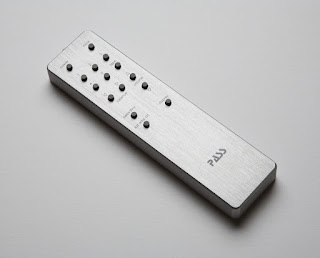 |
| Pass remotes still made of metal, exuding that classy feel... |
On Pop Music, I popped into the Oppo the 2015 remix of Yes — Fragile, done by Steve Wilson. The Hi-Res files are on Blu-ray. The long album cut “Roudabout” sounded really good with a wide spread of the acoustic/classical guitar intro, and then clearly separate drum, guitars and keyboards. A fairly complex recording for its time, it really holds up in Hi-Res. Another track that showcases the reissue is “Heart of A Sunrise,” which has really good vocals by Jon Anderson centered nicely with the Pass INT-60 powering the Westlake Tower 5s. This amp can do no wrong.
As good an amp as the INT-60 is in keeping the congestion out of complicated, multitrack music, I really dug its ability to convey the minimalist acoustic tracks and solo music I was listening to. On the MartinLogan Impressions, the system sounded so good on the Gene Bertoncini — Body and Soul SACD, which is one of my favorite nylon string solo recordings. Mr. Bertoncini’s version of “Greensleeves” has this enveloping acoustic image that just spreads across the room, courtesy of the INT-60 and the ML’s. And it is clean and warm, just as a nylon string guitar should be.
A serious choice for LPs
I played a bunch of vinyl with the budget VPI Player belt-drive turntable, equipped with a Hana “E” series MC high-output cartridge. I bypassed the onboard VPI phono pre, and used the excellent phono pre section of the Rogue RP-5 preamp. On my limited edition, 45 RPM West Montgomery — Full House LP set, the sound was clean and well defined across the image, and delivered that live percussive character the recording is known for. Guitar, piano, sax, bass and drums sounds are relayed via the Pass with the audiophile's original energy intact. Me thinks the INT-60 can do no wrong.
Ditto on the Three Blind Mice reissue of the 1970s Jazz audiophile classic Isao Suzuki Trio — Blow Up. I paired the Pass with the tube phono pre stage of the Rogue RP-5 tube preamp to play this classic reissue; the LP sound was just about as clean as the SACD version from the same tape, and the Pass kept the percussion from becoming too course, as it is some places.
Whie we are on the subject of vinyl, I would like to see the INT-60 have a built-in phono pre for those who decide that 60 watts is plenty for their vinyl playback system. Using an outboard phono pre shows that it is quite capable with vinyl. Maybe Pass could add one as an option, and keep the cost under $10,000
Overall, the Pass INT-60 worked perfectly as far as function and ergonomics. The remote reliably switched between sources, and I love the tactile feel of that big, on-board, volume control. Although it got plenty warm, it never got too hot to touch.
I did use the balanced outputs to drive another amp during the review, a hybrid Rogue Audio Class D/tube Medusa (200 wpc). The combination of the .8 preamp and the Rogue’s precision also reinforced what I heard with the integrated’s internal pre/amp collaboration: the no-nonsense character of the preamp complements what ever good amp you are using. The Pass/Rogue pair sounded great as I expected they would. You can also use the variable XLR and RCA outputs to drive powered subwoofers if you desire a system of speaker separates.
One other pairing that I did included the INT-60 and a pair of made-in-Finland, Amphion Argon3S stand speakers. I bet a lot of Pass customers will buy the INT-60 to pair with space-saving, stand speakers, like the Amphion's; the integrated worked wonderfully with the Argon3S two-ways, which are very analytical and have a clean bass character that is not pumped in the midbass.
For those who desire more power in this design, Pass Labs also offers the 250 wpc INT-250, which is essentially the same design with four times the power. It is priced at $11,000, and is said to be able to drive even the most difficult-to-drive speakers.
The verdict
The INT-60, indeed, is one of the best sounding integrated preamp/amplifiers I have ever reviewed. It is tough to better the INT-60 with separates in this price range. Even if you spend a bit more, you probably will not top it. Incredible detail, width and depth in the expansive stereo image, plus quick bass response makes it ideal for those who want to explore the best in Hi-Res, or their CD collection. Or hook up your favorite phono preamp (the only thing missing from this fine package) and you got a dandy vinyl playback system.
Although separates often attract the audiophile’s attention, 99 percent of us HQ-audio listeners would be happy with the simplicity, economy and, in this case, great sonic attributes, of an integrated. And look at all the space you save.
The list of my INT-60 accolades concludes with an Everything Audio Network Stellar Sound Award, and a nomination to our EAN Integrated Amplifier of The Year category.
John Gatski has been evaluating consumer, audiophile, home cinema and professional audio gear since 1988. In 1995, he created Pro Audio Review, and he has written for SoundOnSound, Audio, Laserviews, Enjoy The Music, The Audiophile Voice, High Performance Review, Radio World and TV Technology. Everything Audio Network is based in Kensington, Md. Articles on this site are the copyright of the ©Everything Audio Network. Any unauthorized use, via print or Internet, without written permission is prohibited. John Gatski can be reached via email: everything.audio@verizon.net












